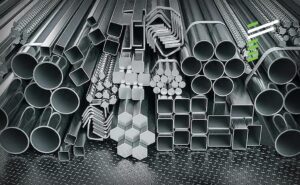At a Glance
- A leading drilling company engaged Renoir to improve collaboration between its Engineering and Operations, to address long-standing issues with the process of modifying the company’s drilling rigs.
- Through our analysis, Renoir identified several areas for improvement, including communication, transparency, and accountability between the company’s Engineering and Operations teams.
- Renoir introduced and implemented many initiatives: redefining key processes, implementing a new Management Control System, and improving cross-functional collaboration.
Background
Our client is one of the leading land and offshore platform drilling contractors headquartered in a North American country. They are primarily involved in drilling oil and gas wells for exploration and production companies.
The company also offers a full range of integrated technologies, including advanced engineering software and autonomous directional drilling and wellbore placement, that can optimise drilling performance.
In a previous engagement with Renoir, our consultants had successfully helped the company’s drilling superintendents to redefine their Change Management process.
Drawing on our expertise, market experience, and objectivity, Renoir was again engaged to help the company’s Engineering and Operations teams work together to address long-standing problems with the process of modifying the company’s drilling rigs. This improved the value that the company’s operations could deliver to its customers.
Analysis
We began this project by understanding the engineering management culture and how it interacted with other functions within the company. We conducted a management culture survey and one-on-one interviews with the engineering staff to get first-hand perspectives from the team.
We then used SIPOC (Suppliers, Inputs, Process, Outputs and Customers, a process mapping and improvement methodology) and MCS (Management Control Systems) brown paper analysis to determine the effectiveness of the systems in place.
Through our analysis, we found the following:
- A lack of communication within the engineering department.
- People relied too much on informal communication, resulting in poor transparency and ineffective processes. Processes had not been updated even though the engineering organisation had grown.
- Management practices were not standardised across engineering groups.
- Ineffective organisational alignment led to a perception that engineering was not seen as responsive to operations.
- A lack of accountability within engineering for the delivery of projects and tasks, complicating customer perceptions.
- Roles and responsibilities in engineering departments overlapped, making it difficult to hold people accountable.
- No clear metrics to measure success and identify areas for improvement.
Overall, there was no clear and measurable approach for the engineering team to deliver rig design solutions across the company. As a result, the engineering team was isolated from its primary customer, the operations team.

Lean Philosophy: When less brings more value


How to close the leadership skills gap for organisational effectiveness

How to transform a subpar company into a high-quality powerhouse
Ready for a change in your organisation?
Project Approach
A single workstream was established, consisting of a Renoir consultant working directly with the engineering management team, including the Senior Vice President of Engineering. The project was split into two parts – 14 weeks for key process redefinition, development and testing of new system elements; followed by a 10-week process to test and roll out the various programme elements within the engineering team.
The initial focus of the project was to create an Enterprise Portfolio Management system that would significantly increase the value of engineering through better portfolio management and project execution. This primary objective was supported by:
1. Clarified strategy and improved organisational engagement.
2. An Engineering Management Control System (MCS) to deliver quantifiable business performance results.
3. Integration of knowledge management with key company functions.
4. Investment in visibility and cross-functional collaboration.
5. Critically review and redefine key processes.
6. Identify potential changes to the organisational structure to improve engineering value to meet the changing needs of the company.
Implementation
Redefining key processes. The company’s Change Management process and the Rig Structural Audit process were a significant source of discourse between engineering and operations.
The existing Change Management system lacked transparency and did not provide an effective framework for collaborative problem solving. Meanwhile, the Structural Audit process, which was controlled by engineering, had minimal collaboration with operations, despite operations bearing the full financial burden of the audits.
Based on these points of contention, this project began by redesigning these key processes, to improve collaboration between the engineering and operations teams.
Process documentation and open discussion. The initiatives outlined above involved cross-functional lean projects to analyse existing processes and then work together to outline future processes. Using process documentation and an impartial facilitator, the teams were able to openly discuss and resolve sensitive issues, resulting in solutions that clarified roles and responsibilities while improving business value. They also established key performance indicators (KPIs) and presented them on dashboards to ensure transparency of processes and costs.
Developing other engineering specific solutions. Having successfully redefined the two key processes, the engineering and operations teams worked through their differences and gained a better understanding of the challenges faced by each group. This improved engagement within the organisation led to increased collaboration on new engineering development projects. The focus then shifted to developing the remaining five engineering-specific solutions.
The first step was to implement the new MCS within the engineering department. The previously identified project framework, had to be adapted due to organisational changes within the company, with the support of Renoir. Key functional interactions were clearly defined and clarified to enable the establishment of an appropriate meeting structure for group morning huddles, weekly and monthly engineering management meetings. These changes laid the foundations for improved communication, facilitated a renewed sense of urgency, and improved task accountability.
Results
“Improving the level of cooperation between Operations and Engineering is priceless.”
– Chief Executive Officer
- Transformed the engineering function into a transparent, collaborative team dedicated to “doing the right things, right”.
- Developed a Management Control System to drive improved organisational value.
- Established a collaborative Stage Gate process to facilitate the delivery of high value development projects.
- Redefined key engineering processes such as Structural Audits and Change Management to improve business value.
- Introduced and adapted project portfolio management best practices to provide directional focus for engineering.
*We have intentionally omitted client-specific details to uphold strict confidentiality.
Is your organisational structure inefficient?











